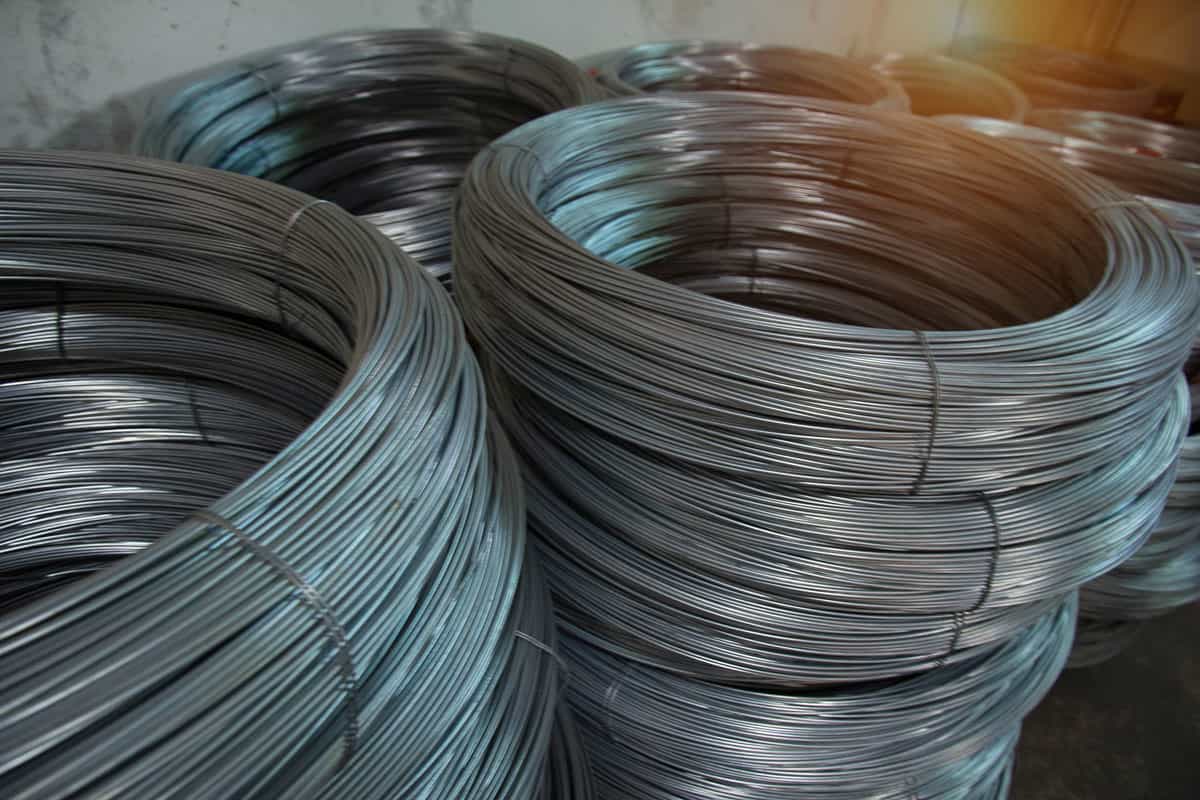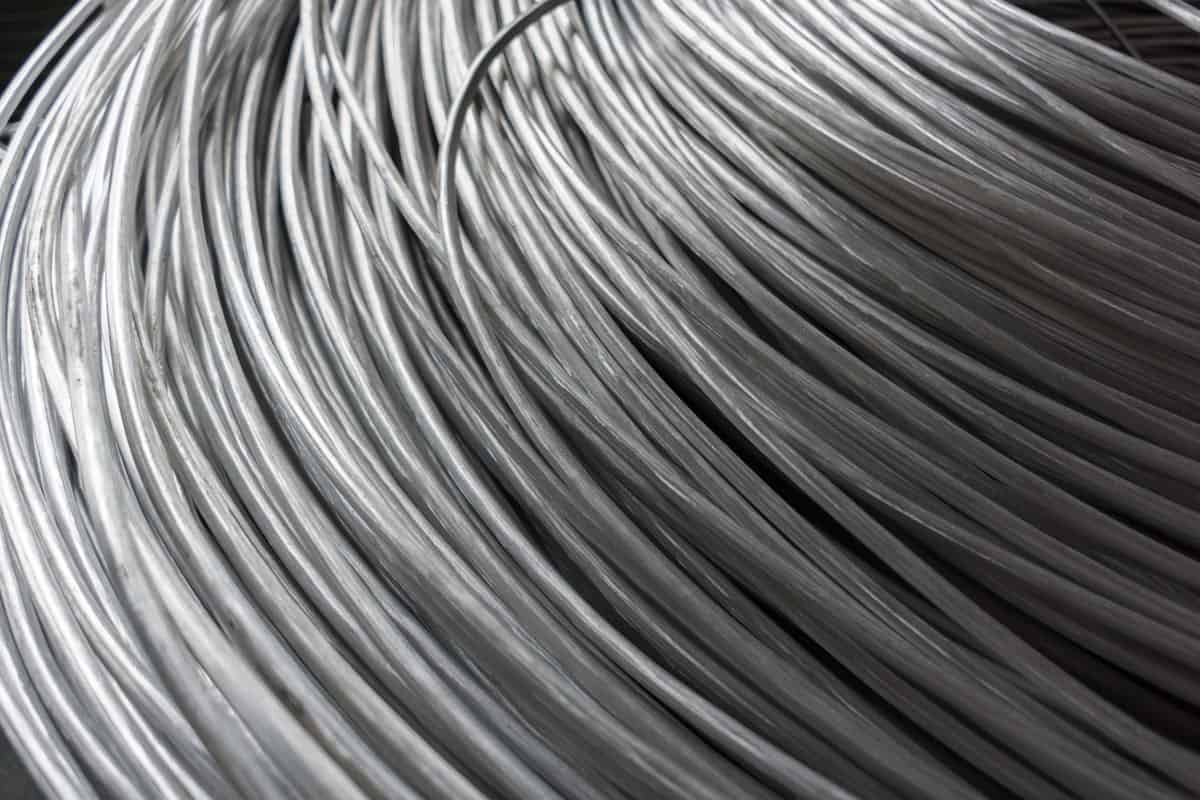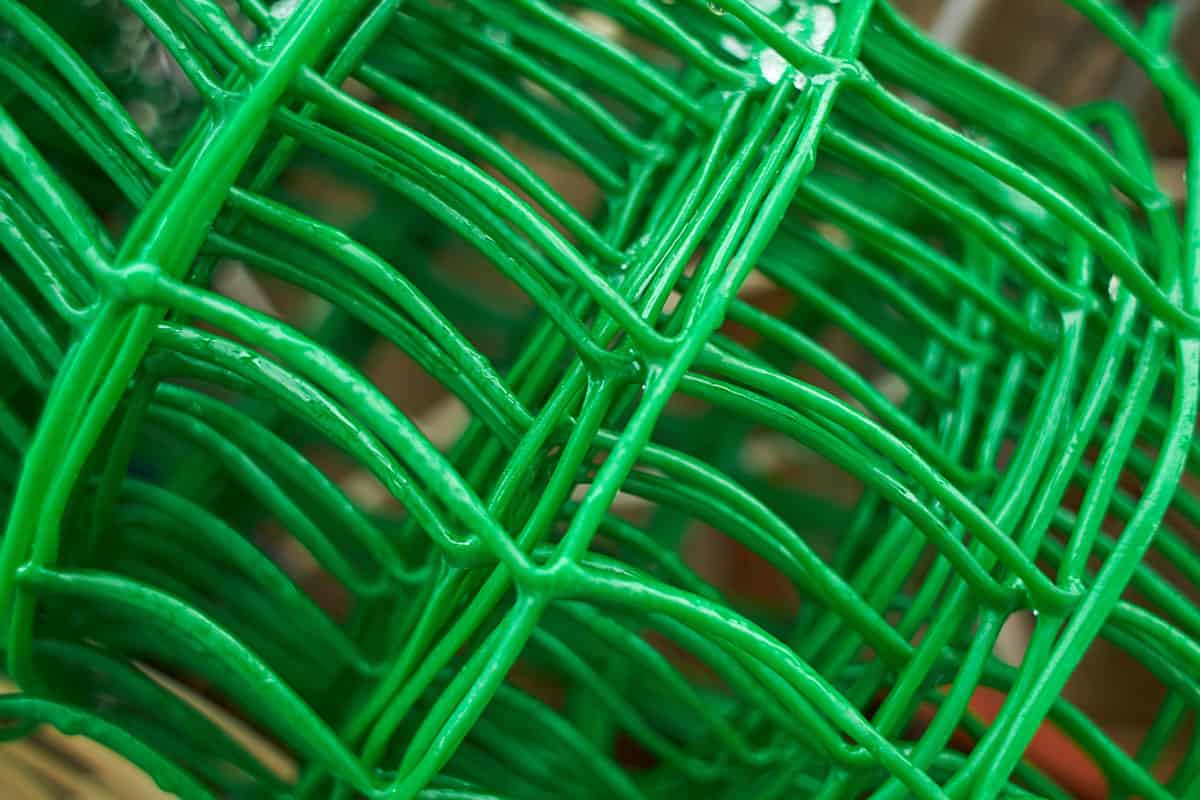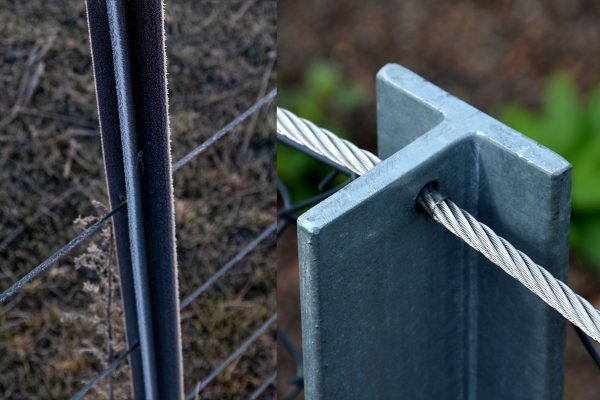Fence posts basically provide the foundation that holds up the structure and keeps it functional. There are several post materials to choose from when building an enclosure - wood, metal, concrete, and T-posts. We have researched every aspect you need to know to help you get started with this project.
T-Posts are sturdy and durable enough when they are used for the specific purpose they were designed for. This particular steel post is primarily intended to support wire fences and meshes to demarcate property and confine livestock, protect crops and provide enclosure.
T-posts are durable and strong enough to maintain their purpose. Its usage may be limited but specialized. The pertinent information contained in this post will hopefully aid you to decide whether it is the best option for your fence.

What Are T-Posts?
T-posts are steel columns designed to hold and support wires and meshes in place. When viewed from the top, it features a 'T' or sometimes 'Y' configuration, hence the name.
Structurally, the fence posts feature regularly placed notches or studs that prevent the wire from displacement. A flat or stabilizing plate located towards the bottom of the post acts as an anchor to strengthen the foundation.
T-Post Features
T-posts are categorized based on their structural strength, the basis of which is the actual amount of steel present in the material. Lightweight posts have a rating of 1.01 pounds per linear foot, medium or regular and heavy-duty posts are designated as 1.25 and 1.33 respectively.
The number, 1.25, for instance, is the weight of steel contained in every foot of the post. Regular weight posts are used for most applications while heavy-duty ones are employed for enclosures that require accommodating greater tension.
To strengthen the material and prolong its durability, T-posts are galvanized. Galvanizing refers to the process of coating metal with a protective layer of zinc. Depending on the amount or thickness of the coat, they are also rated accordingly.
Class 1 galvanized steel has a relatively small amount of zinc and typically lasts for 5 to 10 years, whereas a class a 3 category, which has considerably more coating, has a lifespan of 30 years or more.
Check out MTB Duty Sturdy Fence Posts on Amazon.
What Size T-Post For 4-Foot, 5-Foot, 6-Foot Fence
Your T-posts should be two feet longer than the height of your fence. A 4-foot fence requires a 6 -foot T-post since a third of the structure is below ground to serve as a foundation. A 5- and 6-foot fence would need a 7- and 8-foot long T-post, respectively.
T-posts are available in lengths between 5 and 10 feet. As a general rule, a taller fence would be compatible with a higher rated or sturdier post. Depending on the actual purpose of your enclosure, the dimensions may be adjusted based on your budget and overall preference.
How To Install T-post?
Whether you employ a contractor or plan to install T-posts on your own, the principles remain the same. First, determine the plot and position of your posts. Using plumb and mason lines helps establish their alignment.
The recommended distance between posts is 8 to 12 feet, you may opt to position them closer to improve the surface resistance and strengthen the tension. The studded portion of the post should face the direction where the force or tension is expected.
If you have an enclosure designed to confine livestock, the studs should face inward to keep the post behind the wire and prevent it from being displaced. Once you have decided on the actual placement, drive them into the ground with a post pounder.
The stabilizing plate or flare is the flattened portion located at the bottom of the post. It serves to anchor the fence and provides the reference point, if it is under the soil level, your post is optimally set. The wires are then attached using clips or staples.
What Are Corner Or Brace Posts?
The greatest tension generated by a wire fence lies on the corner or boundary post because the pull of the entire structure on all sides terminates at this point. Several experts and contractors recommend a solid wooden post set in concrete for this particular structure since it would provide a more stable framework.
To optimize the durability and longevity of your wire fence, use pressure or chemically treated wood in combination with T-posts. The general principle is a 5 to 1 ratio between wood and steel posts, that is, set your wooden corner foundations, layout 5 T-posts, and intermittently fortify them with lumber anchors or line posts.
The ideal distance between pickets is 8 to 12 feet, but depending on the area covered, the height of the enclosure, and the purpose of the fence, you may adjust the proximity between posts.
General Purpose And Usage Of T-posts
T-posts are usually utilized for farming and agricultural purposes. They are the preferred material when enclosing large portions of land due to their affordability, ease of installation, and considerable strength.
The material rating and the distance between posts and wire components differ in relation to your purpose and specifications.
A 4-foot fence, for instance, is appropriate for crops and small livestock such as chickens or geese. An 8-foot enclosure on the other hand would prevent cattle and horses from escaping the fence.
As recommended, select a heavier post for taller enclosures (1.33 pounds per linear foot) and regular ones for general purposes (1.25 pounds per foot).
Wire Considerations
T-posts are relatively durable and resistant to the elements. What finally determines the overall integrity of your fence lies in the wire used to enclose the structure. This supplement is a general overview aimed to guide you in choosing the best kind suited to your needs.
1. Galvanized Metal

Galvanized metal, as mentioned, is coated with a protective layer of zinc. Compared to other metals, zinc holds up better against the elements such as weather, moisture, and rust.
Galvanization that takes place after welding is the longest lasting type and you may find them referenced as GAW. They may cost more but do not have to be replaced as often as the regular kind.
2. Stainless Steel

Stainless steel is extremely resistant to weathering, corrosion, and wear and it lasts well even in harsh conditions. Steel based wire fences are noted for their capacity to maintain the form and resilience of the enclosure.
The inherent strength of steel makes it ideal to confine heavier livestock such as cattle or horses.
3. Vinyl Coated Wires

Vinyl coated wires are protected with a thick coating of PVC to strengthen the material as well as enhance its appearance. The plastic layer is bonded to the wire by a heating process which makes it adaptive to extreme temperatures, flexible to tension, and resistant to cracking and tearing.
In Conclusion

'T' or 'Y' posts are durable and sturdy when applied for the right purpose. The height of the fence above ground requires two additional feet for the foundation. T-posts last longer when combined with solid wood corners and intermittent support. We hope we addressed your concern and that this article helped.
Should Fence Posts Be Below Frost Line? [How To Prevent Frost Heave Posts]




